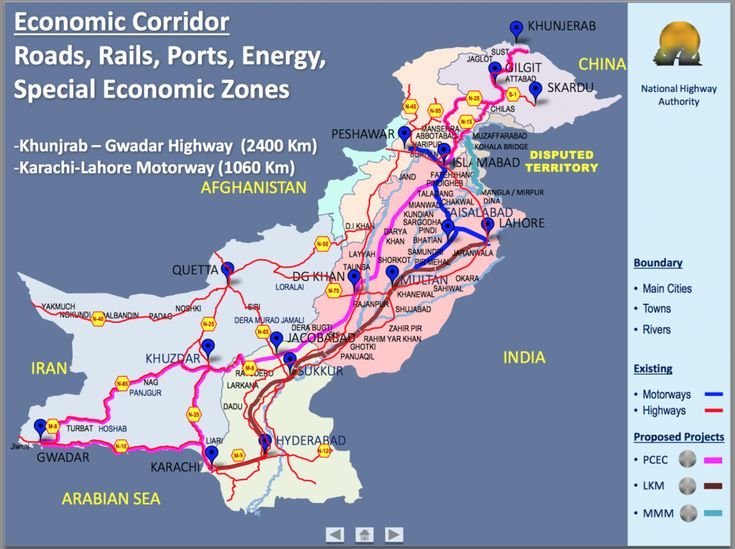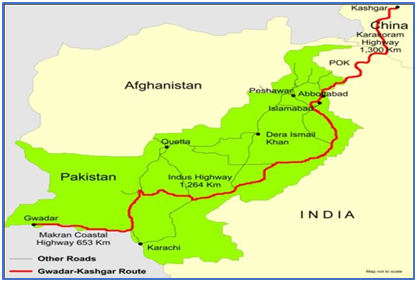The China-Pakistan Economic Corridor (CPEC) is a significant infrastructure and economic development project spanning across Pakistan, initiated as part of China’s Belt and Road Initiative (BRI). This ambitious undertaking aims to connect Gwadar Port in Pakistan’s southwestern Balochistan province to China’s Xinjiang region, through a network of highways, railways, and pipelines. CPEC is not merely a transportation project; it encompasses a broad spectrum of initiatives including energy projects, industrial zones, and socio-economic development programs. Understanding CPEC requires examining its historical context, its geopolitical implications, its economic significance, and its impact on both China and Pakistan.
Historical Context: The roots of CPEC can be traced back to the longstanding friendship between China and Pakistan. Diplomatic ties between the two nations date back to 1950, and over the decades, their relationship has grown stronger, particularly in the realm of defense and strategic cooperation. The proposal for an economic corridor emerged in 2013 during Chinese Premier Li Keqiang’s visit to Pakistan, where the idea was formalized and included in the China-Pakistan joint statement. This marked the beginning of an ambitious endeavor aimed at fostering economic connectivity between the two countries.

Geopolitical Implications: CPEC holds significant geopolitical implications for the region and beyond. For China, it offers an alternative route for its energy imports, reducing its reliance on maritime routes through the Malacca Strait, which is vulnerable to geopolitical tensions. It also serves China’s broader strategic goal of enhancing its influence in South Asia and beyond. For Pakistan, CPEC is seen as a game-changer that promises to address infrastructure deficits, boost economic growth, and alleviate poverty. However, the project has also raised concerns among neighboring countries, particularly India, which views it as a strategic encroachment by China and Pakistan in the region.
Economic Significance: CPEC is poised to bring about significant economic transformation in Pakistan. The project entails investments in infrastructure development, energy generation, industrial parks, and special economic zones. These investments are expected to create jobs, attract foreign investment, and spur economic growth. The energy projects under CPEC aim to address Pakistan’s chronic energy shortages, thereby boosting industrial productivity and improving living standards. Additionally, the transportation infrastructure developed under CPEC will facilitate trade not only between China and Pakistan but also with other countries in the region, enhancing regional connectivity and trade integration.
Impact on China: For China, CPEC represents an opportunity to expand its influence and access new markets. Through investments in infrastructure and energy projects, China aims to secure its energy supplies, promote its exports, and enhance its connectivity with the Middle East, Africa, and Europe. Furthermore, CPEC facilitates the development of China’s less-developed western regions, particularly Xinjiang, by providing them with access to the Indian Ocean and opening up new trade routes. From a broader perspective, CPEC aligns with China’s vision of a multipolar world order and its aspiration to play a more prominent role in global affairs.
Impact on Pakistan: CPEC has the potential to catalyze Pakistan’s economic development and address key socio-economic challenges. The infrastructure projects under CPEC will improve transportation networks, reduce logistic costs, and facilitate trade, enhancing Pakistan’s global market competitiveness. The energy projects will help mitigate power shortages, attract investment in industries, and create employment opportunities. Moreover, the development of industrial zones and special economic zones under CPEC is expected to spur industrialization and promote exports, contributing to sustainable economic growth and poverty reduction.

Challenges and Concerns: Despite its potential benefits, CPEC faces several challenges and concerns that need to be addressed for its successful implementation. These include security risks associated with the project, particularly in restive regions like Balochistan, where separatist movements pose a threat to infrastructure development. Moreover, there are concerns about the transparency and sustainability of CPEC projects, with critics raising questions about their economic viability and environmental impact. Additionally, geopolitical tensions in the region, particularly between India and Pakistan, could undermine the prospects of regional cooperation and connectivity.
Future Prospects: The future of CPEC depends on how effectively China and Pakistan address the challenges and concerns associated with the project. Strengthening security measures, ensuring transparency and accountability in project implementation, and addressing environmental concerns are essential for building confidence among stakeholders and attracting investment. Moreover, regional cooperation and engagement with neighboring countries are crucial for realizing the full potential of CPEC as a catalyst for economic development and regional integration. If managed effectively, CPEC can transform Pakistan’s economic landscape and contribute to peace and stability in the region.
CPEC represents a paradigm shift in the economic and strategic dynamics of South Asia and beyond. It promises to foster economic connectivity, promote regional integration, and drive sustainable development. However, realizing this potential requires addressing various challenges and concerns while capitalizing on the opportunities presented by the project. As CPEC continues to unfold, its impact on China, Pakistan, and the broader region will be closely watched, shaping the future trajectory of geopolitics and economic development in South Asia.
